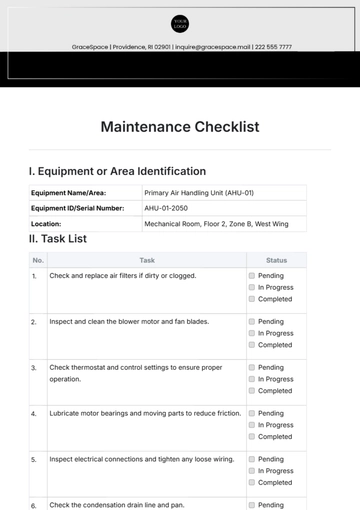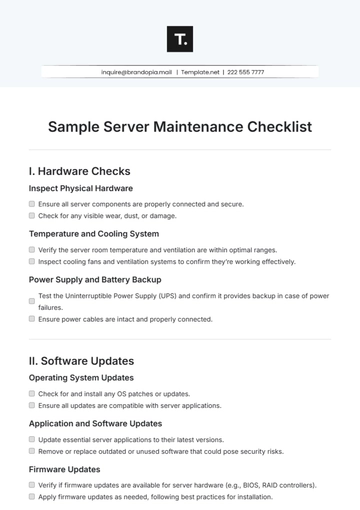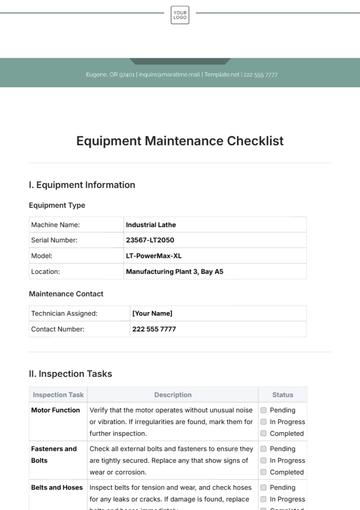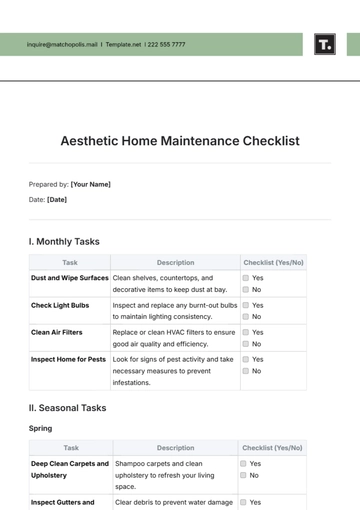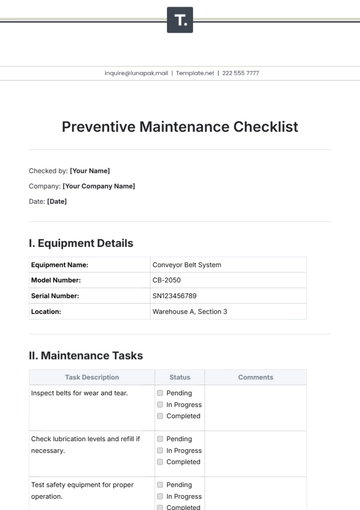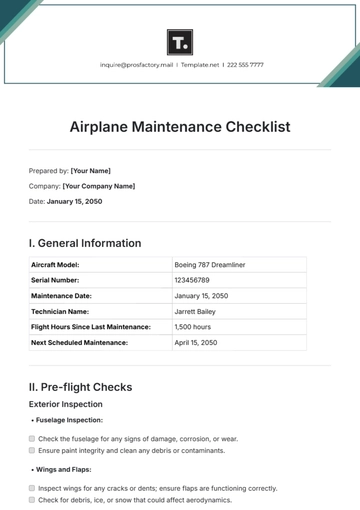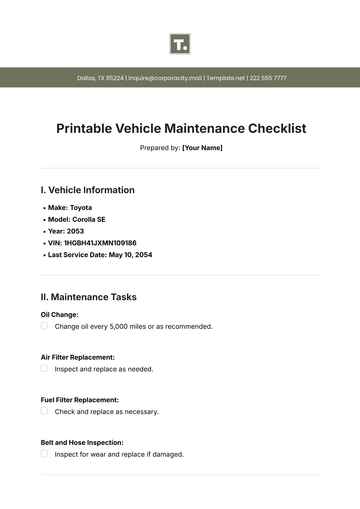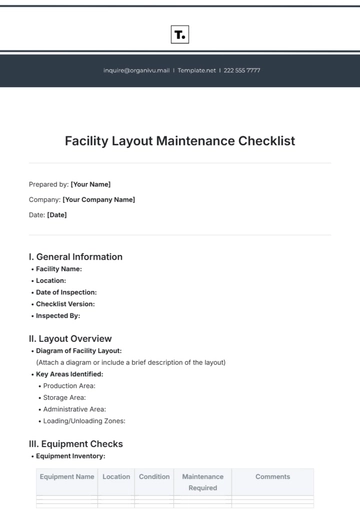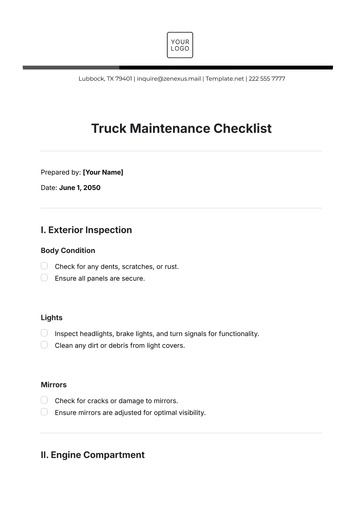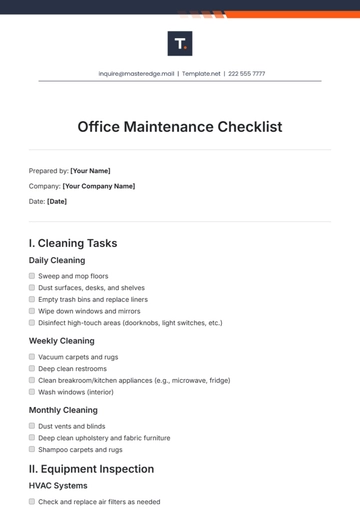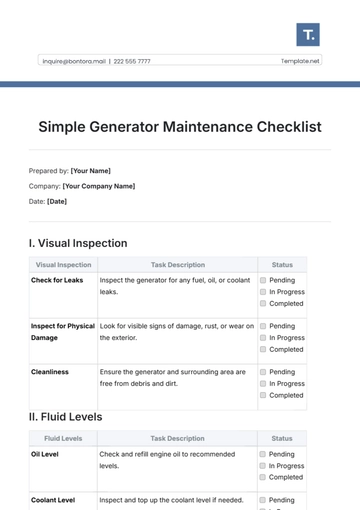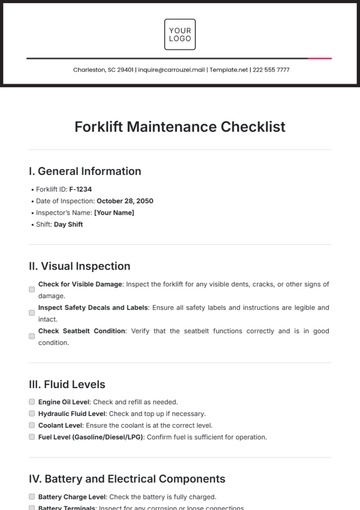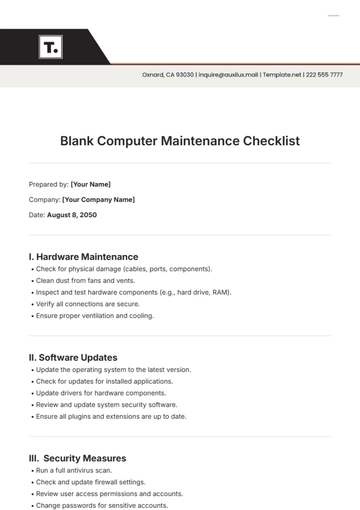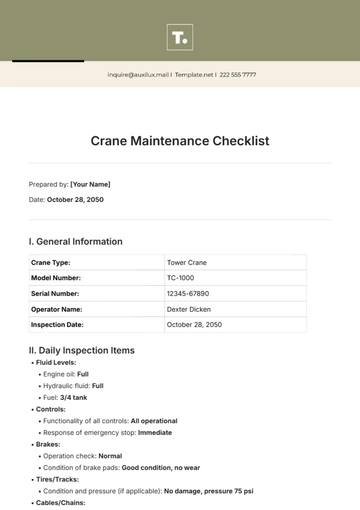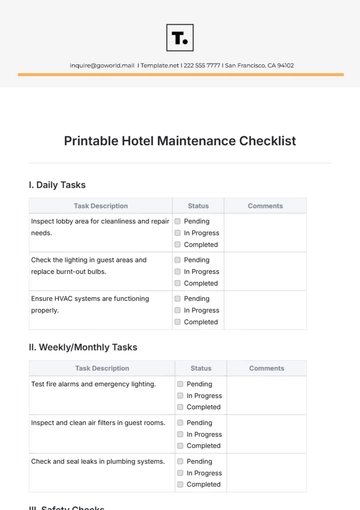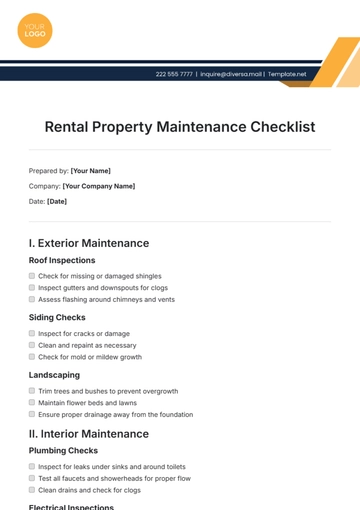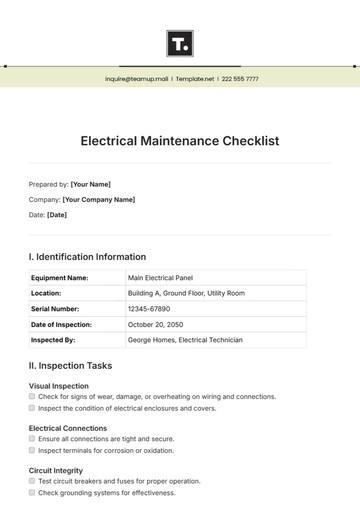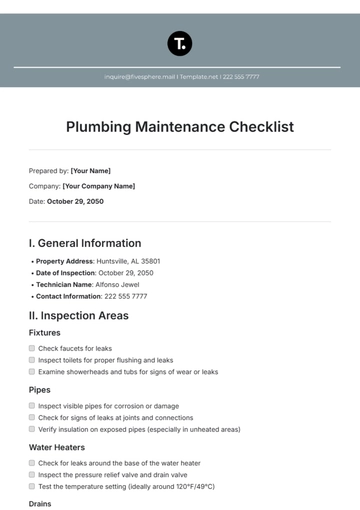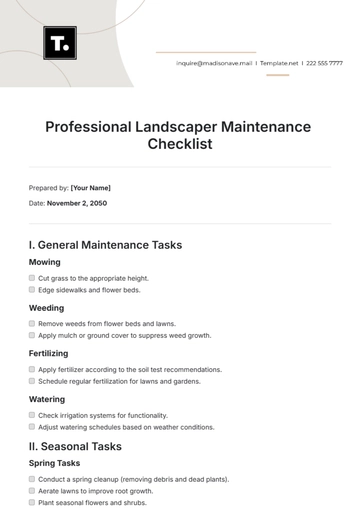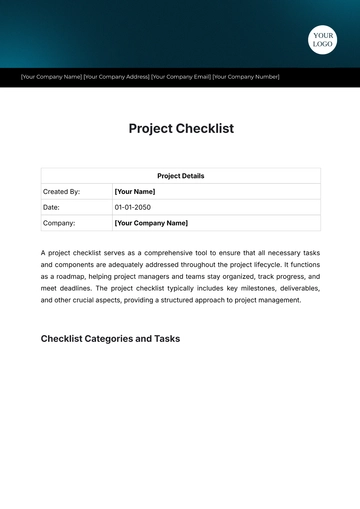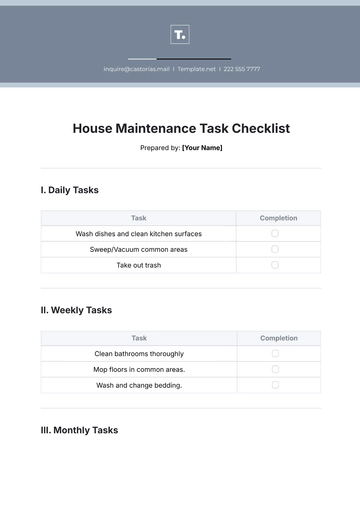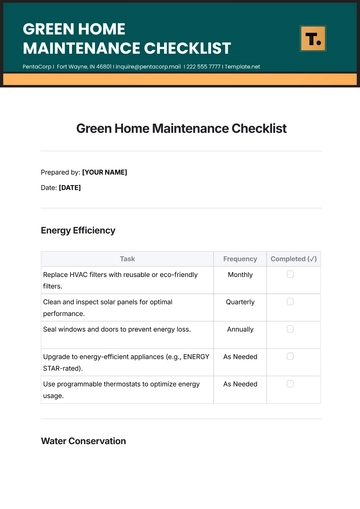Free Simple Cardiac Assessment Checklist
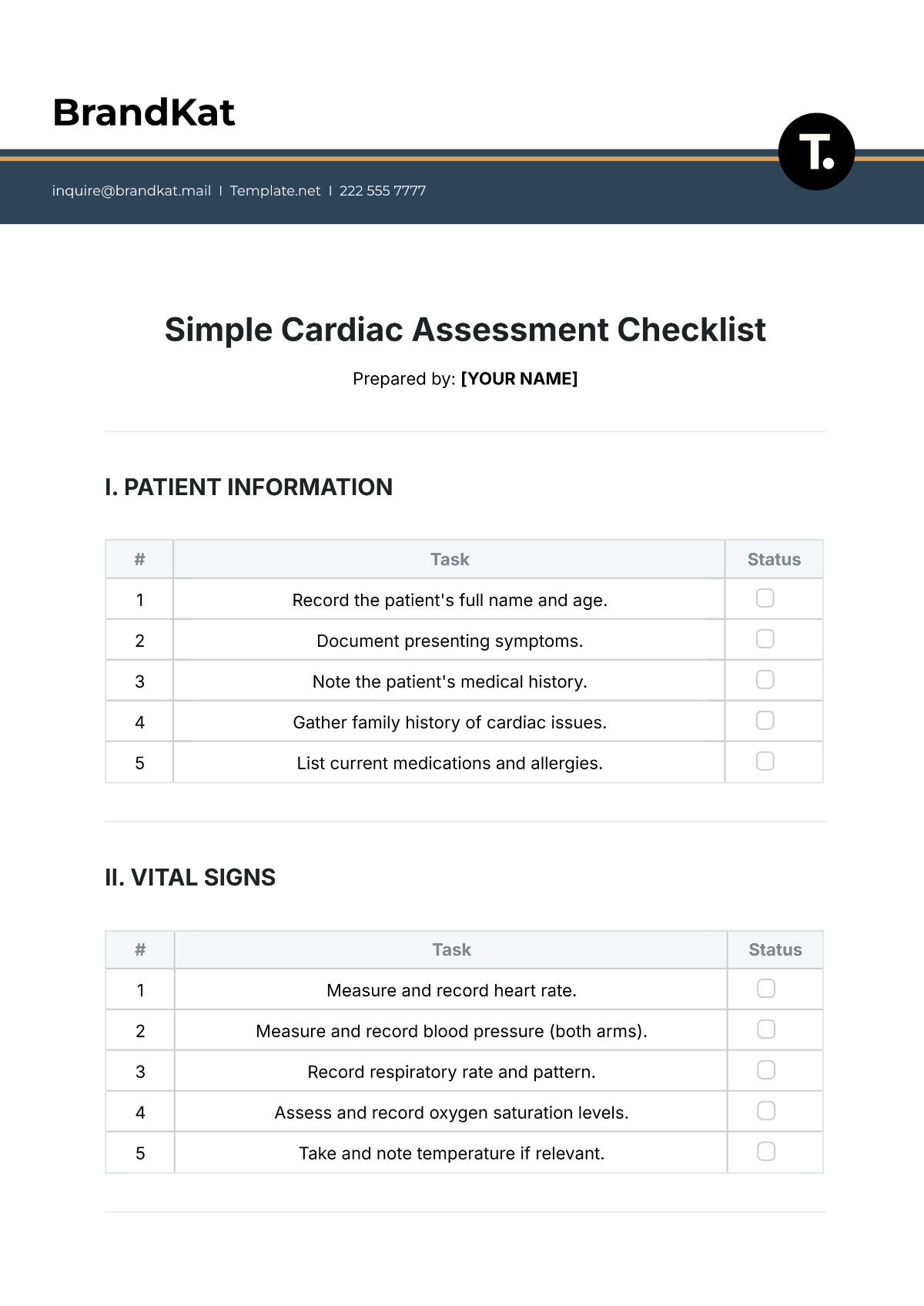
Prepared by: [YOUR NAME]
I. PATIENT INFORMATION
# | Task | Status |
|---|---|---|
1 | Record the patient's full name and age. | |
2 | Document presenting symptoms. | |
3 | Note the patient's medical history. | |
4 | Gather family history of cardiac issues. | |
5 | List current medications and allergies. |
II. VITAL SIGNS
# | Task | Status |
|---|---|---|
1 | Measure and record heart rate. | |
2 | Measure and record blood pressure (both arms). | |
3 | Record respiratory rate and pattern. | |
4 | Assess and record oxygen saturation levels. | |
5 | Take and note temperature if relevant. |
III. PHYSICAL EXAMINATION
# | Task | Status |
|---|---|---|
1 | Perform chest auscultation to detect heart sounds. | |
2 | Assess peripheral pulses for strength and rhythm. | |
3 | Check for signs of edema in extremities. | |
4 | Observe for cyanosis in lips, nail beds, or skin. | |
5 | Inspect the jugular vein for distension. |
IV. DIAGNOSTIC TESTS
# | Task | Status |
|---|---|---|
1 | Conduct an Electrocardiogram (ECG/EKG). | |
2 | Schedule and perform an echocardiogram. | |
3 | Collect and analyze lab tests (e.g., troponin, cholesterol). | |
4 | Obtain imaging studies if necessary (e.g., chest X-ray, CT scan). | |
5 | Review results with the patient or team. |
V. RISK FACTOR ASSESSMENT
# | Task | Status |
|---|---|---|
1 | Evaluate for smoking or tobacco use. | |
2 | Check for a history of diabetes or hyperglycemia. | |
3 | Measure and record Body Mass Index (BMI). | |
4 | Assess for hypertension and its management. | |
5 | Discuss lifestyle factors, including diet and exercise. |
VI. CLINICAL NOTES AND RECOMMENDATIONS
# | Task | Status |
|---|---|---|
1 | Summarize key findings from the assessment. | |
2 | Provide initial treatment recommendations. | |
3 | Determine if a specialist referral is needed. | |
4 | Document patient education provided. | |
5 | Schedule follow-up or additional diagnostic tests. |
- 100% Customizable, free editor
- Access 1 Million+ Templates, photo’s & graphics
- Download or share as a template
- Click and replace photos, graphics, text, backgrounds
- Resize, crop, AI write & more
- Access advanced editor
Streamline your cardiac evaluations with Template.net's Cardiac Assessment Checklist Template. This editable and customizable tool is tailored for healthcare professionals, offering a quick and efficient way to document cardiac health assessments. Modify it effortlessly in our Ai Editor Tool for precise and comprehensive cardiac care documentation. Make it yours immediately!
You may also like
- Cleaning Checklist
- Daily Checklist
- Travel Checklist
- Self Care Checklist
- Risk Assessment Checklist
- Onboarding Checklist
- Quality Checklist
- Compliance Checklist
- Audit Checklist
- Registry Checklist
- HR Checklist
- Restaurant Checklist
- Checklist Layout
- Creative Checklist
- Sales Checklist
- Construction Checklist
- Task Checklist
- Professional Checklist
- Hotel Checklist
- Employee Checklist
- Moving Checklist
- Marketing Checklist
- Accounting Checklist
- Camping Checklist
- Packing Checklist
- Real Estate Checklist
- Cleaning Checklist Service
- New Employee Checklist
- Food Checklist
- Home Inspection Checklist
- Advertising Checklist
- Event Checklist
- SEO Checklist
- Assessment Checklist
- Inspection Checklist
- Baby Registry Checklist
- Induction Checklist
- Employee Training Checklist
- Medical Checklist
- Safety Checklist
- Site Checklist
- Job Checklist
- Service Checklist
- Nanny Checklist
- Building Checklist
- Work Checklist
- Office Checklist
- Training Checklist
- Website Checklist
- IT and Software Checklist
- Performance Checklist
- Project Checklist
- Startup Checklist
- Education Checklist
- Home Checklist
- School Checklist
- Maintenance Checklist
- Planning Checklist
- Manager Checklist
- Wedding Checklist
- Vehicle Checklist
- Travel Agency Checklist
- Vehicle Inspection Checklist
- Interior Design Checklist
- Backpacking Checklist
- Business Checklist
- Legal Checklist
- Nursing Home Checklist
- Weekly Checklist
- Recruitment Checklist
- Salon Checklist
- Baby Checklist
- Equipment Checklist
- Trade Show Checklist
- Party Checklist
- Hospital Bag Checklist
- Evaluation Checklist
- Agency Checklist
- First Apartment Checklist
- Hiring Checklist
- Opening Checklist
- Small Business Checklist
- Rental Checklist
- College Dorm Checklist
- New Puppy Checklist
- University Checklist
- Building Maintenance Checklist
- Work From Home Checklist
- Student Checklist
- Application Checklist
